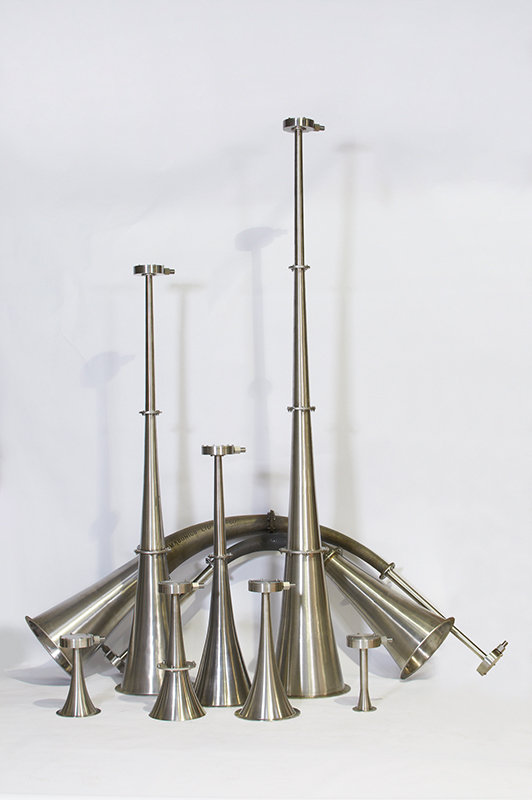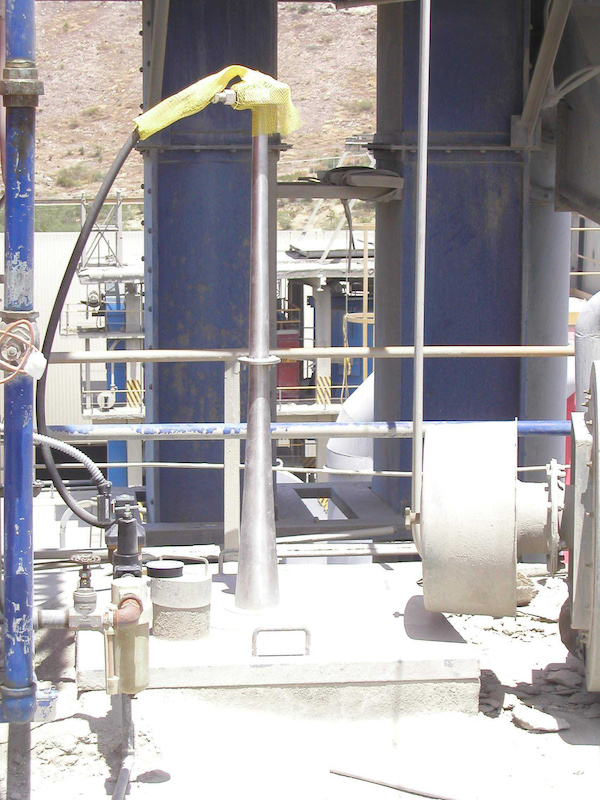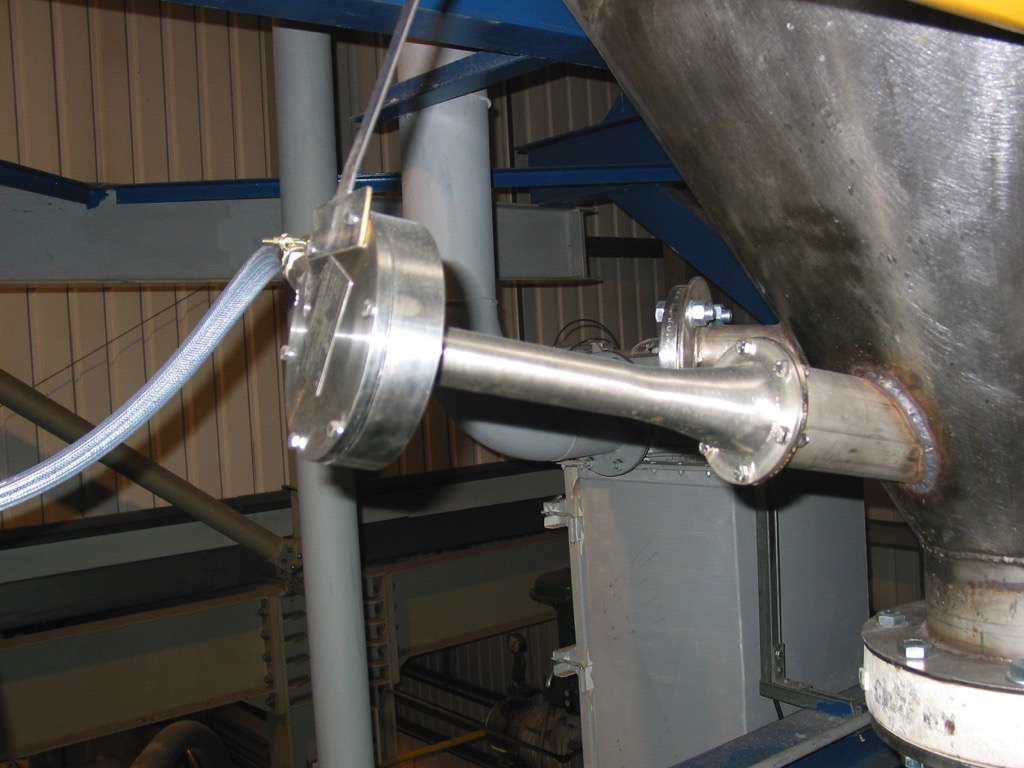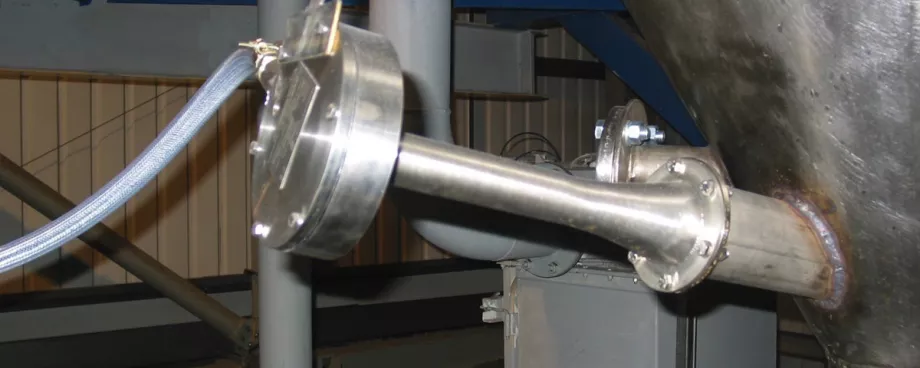(From the archive of ”bulk solids handling", article published in Vol. 34 (2014) No. 2 , ©2014 bulk-online.com)

Acoustic Cleaners have been of tremendous benefit in both preventing material hang-up and ensuring maximum, continuous material flow in silos and hoppers. The two main problem areas occurring here are:
- Ratholing – where the material builds up on the sidewalls causing severely reduced “funnel flow”, which also restricts the silo being used to its full storage capacity.
- Bridging – where the material bridges over the outlet area either severely restricting material flow or stopping it completely.
Irrespective as to whether the bulk material storage facility is under 500 kg or over 30 000 tonne capacity acoustic cleaners have eliminated both of these problems. Typical examples range from small 20 tonne capacity internal pre-packing hoppers right up to 30 000 tonne capacity cement silos.Where the problem is ratholing with the material building up on the sidewalls, a low frequency, larger Primasonics model such as the PAS-60 or PAS-75 is mounted on top of each silo to prevent material wall and thus ensure that the full capacity of the silo is utilised. These units can be located at any position on top of the silo, as sound waves travel at over 344 metres per second and in a 360° radius. Generally speaking they are mounted on top of an existing inspection hatch, thus installation is simple and inexpensive. A typical installation is shown in in the second photo above.

Moving on to silo and hopper discharge, in such applications one of the smaller acoustic cleaner models such as the PAS-350 or PAS-420 with higher frequencies is employed. The higher the frequency the shorter the wavelength and so all the acoustic power created by the Wave Generator is concentrated over a much shorter range – say between 1 and 5 m. Therefore a higher frequency Primasonics Audiosonic Acoustic Cleaner mounted just above the discharge will prevent material bridging and ensure even maximum material flow. A typical example is shown in the photo on page 33.It is important to note and understand several main advantages that acoustic cleaners have over alternative methods, which may have been tried in the past to try and aid material flow. Acoustic cleaners operate at frequencies very much higher than the resonance frequency of steel, ceramic lining, concrete etc. Therefore they are guaranteed not to cause vibrational damage to any vessel or structure.

This is quite unlike vibrators, which by their very nature and method of installation, cause vibration and stress weaknesses within the vessel or structure to which they are attached. The vibration resonances first have to pass through the vessel wall before reaching the material. When using the acoustic cleaners, their higher frequencies are directly absorbed into the stored material giving 100% efficiency.Air cannons/blasters seek to affect a very localised cure for a blockage problem, which has already occurred. In many cases the air cannon simply “blows” a localised hole through the blockage, necessitating the installation of many air cannons within the general problem area. It is generally true to say that one very rarely finds a single air cannon in effective operation.This is totally the opposite with acoustic cleaners where a single item can replace multi air cannons; however we then approach the problem with a totally different philosophy - by preventing the build up from occurring in the first place.
How acoustic Cleaners work
Acoustic cleaners are extremely simple in their operation, requiring only normal plant compressed air for their initial energy source. Compressed air enters the wave generator and forces the only moving part, the ultra high-grade titanium diaphragm to oscillate very rapidly within its specially designed housing. These rapid oscillations create the base tone and the various different bell sections convert, amplify and distribute this base tone into a range of different key fundamental frequencies. Primasonics have selected seven such key fundamental frequencies for their audiosonic acoustic cleaner range from 60 Hz to 420 Hz. The acoustic cleaners only require activating for a few seconds at periodical intervals.Audiosonic acoustic cleaners from Primasonics are aiding material flow from hoppers and silos in such diverse industries as cement, gypsum, flour, MDF wood products, ceramics, chemicals, carbon black, petrochemicals and power plant. They are also employed in a range of ancillary plant such as filters, cyclones, fans, ductwork, SCR’s. ESPs and steam/power generation plants.
A Note from the Editor
For all statements in this article that refer – directly or indirectly – to the time of publication (for example “new”, “now”, “present”, but also expressions such as “patent pending”), please keep in mind that this article was originally published in 2014.
■







